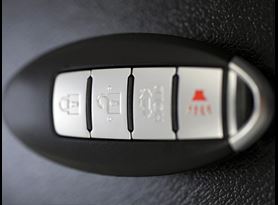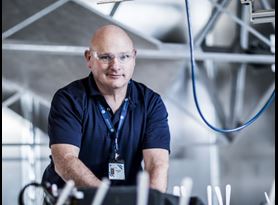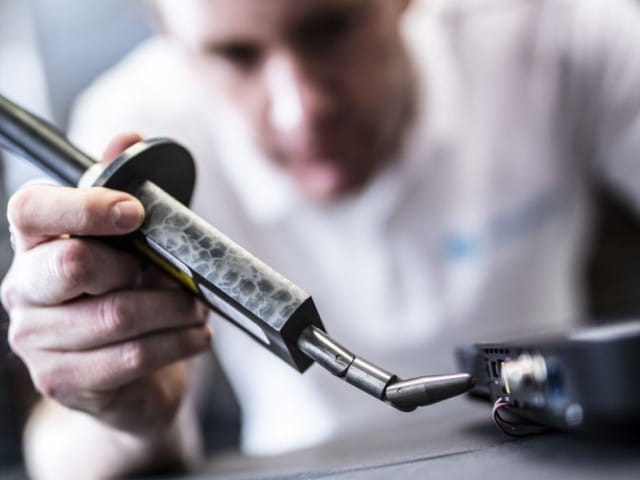EN 62368 Standard Update Information
This article provides an overview of the EN 62368-1 product electrical safety standard, explaining why it is being introduced, which standards it is replacing, and the key differences between the former and the latter. It also provides guidance on the new terminology and different injury annexes within the standard, as well as covers the consequences of EN 62368-1 when marketing any products which fall under the new standard globally.
What is EN 62368-1?
EN 62368-1 is a product safety standard that alters the product compliance landscape, replacing standards EN 60950-1 Information technology equipment, Safety, and EN 60065 Audio, video and similar electronic apparatus - Safety requirements.
Both of the previous standards cover the majority of electrical non-household products, but the boundaries between information technology equipment (ITE) and audio/video (AV) products have become blurred; it had become evident that there was a need for a new standard that encompasses both ITE and AV.
EN 62368-1 will formally replace EN 60950-1 and EN 60065 standards in December 2020, with no grandfathering period.
EN 62368 is a hazard-based standard
Unlike previous incident-based standards, EN 62368 is a hazard-based standard. Hazard-based standard engineering (HBSE) is based on the principle that safety is not dependent on the product, but rather on the energy within the equipment.
There is no risk analysis involved in the application of the standard to individual products, either by the manufacturer or certifier. It uses a proactive approach by identifying hazardous energies and testing the effectiveness of their safeguards. This gives manufacturers greater scope in deciding how to design safeguards for their products and is better suited for the introduction of new technologies and products.
As the scope of the standard is broader, it covers a more extensive range of products than previously, including all products that were formally covered under EN 60950-1 and EN 60065.
Understanding the new terminology
It is important to understand the new terminology used in the standard. This includes the term ‘safeguard’, which is used when referring to the device or scheme that protects from a particular energy source.
Under EN 62368-1, hazards are now specific to the type of person using the device, with the individual being either a ‘skilled person’, ‘instructed person’, or ‘ordinary person’.
A skilled person has training or experience in the technical specifics of the device. This person is expected to use their training to recognize energy sources that could result in a hazard that may cause pain or injury.
They should be protected against unintentional contact/exposure to energy sources capable of causing injury. An instructed person has been trained by or is supervised by a skilled person, to identify and avoid unintentional contact with hazardous energy sources that may cause pain, and should not be exposed to energy sources capable of causing injury under normal operating, abnormal operating, or single fault conditions.
Ordinary persons are all other people who do not fit under the skilled person or instructed person criteria. This includes not only users of the equipment but anyone that may have access to or be in the vicinity of the equipment. An ordinary person should not be exposed to parts capable of causing pain or injury when the device is in normal or abnormal operating conditions. Under single fault conditions, they should not be exposed to parts capable of causing injury.
These definitions are significant as they mean that the testing conducted depends upon whom the manufacturer is declaring has access to the device.
Electrical energy sources’ specific classification criteria help to define the test parameters applied
Electrical energy sources also now have specific classification criteria which, like the definitions of the type of person using the device, also help to define the test parameters applied:
ES1 devices are class 1 electrical energy sources with current/voltage which do not exceed ES1 limits under normal operating conditions, abnormal operating conditions, and single fault conditions (of a component/device/insulation) not serving as a safeguard. An ES1 device shall also not exceed ES2 limits under single fault conditions applied to a basic safeguard.
ES2 devices do not exceed the ES1 limits for prospective touch voltage and touch current. Also, normal operating, abnormal operating, and single fault conditions do not cause prospective touch voltage and touch current to exceed ES2 limits.
ES3 energy sources do not exceed the limits for ES2 for prospective touch voltage and touch current.
As there are a considerable number of other similar categorized definitions (such as those relating to power sources and mechanical energy sources) that also have a significant impact upon the testing applied, it is often difficult to determine the specific test parameters without considerable review by an expert engineer.
Understanding the Annexes
Another important difference between EN 62368-1 and the other safety standards is that almost all the tests have been segregated into Annexes rather than placed in the body of the standard. Under the new standard, the normal operating, abnormal operating, and single fault condition tests that the engineer will apply are clearly defined in Annex B.
There are also significant differences between the tests prescribed in the new standard and those of EN 60950-1/60065. For example, testing the device under normal operating conditions shall be conducted under the most unfavorable conditions, and should consider supply voltage, frequency, and environmental conditions such as the highest-rated ambient temperature.
Annex M specifically covers batteries, with the requirements increasing in scope considerably. Annex M covers 13 pages of different requirements, including specific requirements for protection circuitry, drop tests, and leakage current. There are also new specific approval acceptance criteria compared to clause 4.3.8 of the previous standard EN 60950.
The standard also applies to a product’s components and subsystems
It is important to note that EN 62368 1 applies to a product’s components and subsystems, such as power supplies, hard drives, and fans. Component manufacturers must prepare for their products to comply with EN 62368-1. The provision in sub-clause 4.1.1 of the new standard enables companies to continue using their inventory of 60950 1 or 60065 parts in products certified to 62368-1.
Component manufacturers should begin the process of qualifying their products to the requirements of the standard as soon as possible. Even if a component is certified to EN 60950 1, testing laboratories will still be required to conduct tests on the end product consistent with the requirements of EN 62368-1.
Key differences between EN 60950-1 and EN 62368-1
Three key differences between EN 60950-1 and EN 62368-1 outlined below are the method for determining protection against electrically-caused fire, the electric strength test, and the test for the residual voltage after disconnection of the main supply.
Electrically-caused fire
Under EN 62368-1 all-electric circuits are now classified as PS1, PS2, or PS3 based on the electrical power available to the circuit from the power source. The electrical power source classification is determined by measuring the maximum power under specific worst-case power conditions. Whereas under EN 60950-1 fire protection may have been determined based on constructional or fault assessment, test programs now need to ensure that actual measurements are made for each electrical circuit.
Cap discharge
Under EN 60950-1, the discharge voltage is to be measured at one second after disconnection for pluggable type A equipment, and 10 seconds after disconnection for pluggable type B equipment. The limit is 37% of the peak voltage at the disconnection point.
Under EN 62368-1, the discharge voltage is to be measured two seconds after disconnecting. For normal conditions, two limits need to be satisfied. The limit for the ordinary person is ES1 and for the instructed person is ES2. The limit under a single fault condition is ES2. All limits are shown in Table 5 of the standard.
Electrical strength
Under EN 60950-1, electrical strength (Hipot) test voltage is selected based on either Table 5B (Peak working voltages) or Table 5C (required to withstand voltage) of the standard as determined in Annex G.4.
Under EN 62368-1, the test voltage is determined based on the highest value from Table 26 (Transient voltage), Table 27 (Peak working voltage), and Table 28 (Temporary overvoltages) of the standard. If using DC test voltage, the standard requires the test to be performed in both polarities.
What does EN 62368-1 mean for manufacturers?
There will be no grandfathering period for anyone after December 2020 when EN 60950-1 and EN 60065 standards will be formally withdrawn; products covered by the scope of EN 62368-1 will need to comply with the requirements of that standard.
In the EU, products currently certified to either EN 60950-1 or the EN 60065 standards will need to comply with the requirements in EN 62368-1. This means that manufacturers have until the December 2020 effective date to retest their products for compliance with the new requirements to continue to legally market their products in the EU.
In North America, products currently certified to the previous standards can continue being produced and marketed as long as they incur no major changes that would require re-testing. Guidelines from OSHA state that any changes that require a listing update after the cessation date will require the device to be up-issued to 62368-1.
Manufacturers intending to export products internationally may need to certify their products to both the current standards and to EN 62368-1, depending on which countries they are intending to export to. This is because whilst some countries such as Japan and Korea have adopted the standard, others, including China and India, have not.
Moving forward, all new evaluations for EN certification will be carried out to the requirements of EN 62368-1. Manufacturers need to be in the process of submitting RFQs immediately. The standard is sufficiently dissimilar to those preceding that the process can be regarded as a full re-assessment. CB-certified devices will need fresh reports and certificates in line with IECEE CB scheme requirements.
To prepare for this, manufacturers need to be reviewing the standard now to determine whether their existing device needs any physical or electrical alteration. Whilst the majority of devices that passed the old standards should also pass the new one, there is no guarantee. As it will not be a simple update, it is best to start the process as soon as possible. Failure to update the relevant documentation may prevent manufacturers from being able to place their products on the market until the issue is resolved.
If you would like one of Element’s experts to review an existing 60950/60065 report to determine the likely schedule and cost of testing to the new standard, please contact us today.
Find related Resources
Related Services

Radio and Wireless Device Testing
We work with everyone from Chipset Vendors to those integrating radio modules to enable you to deliver your wireless radio products to market.

Wireless Coexistence Testing
Our wireless coexistence testing programs evaluate how wireless medical devices and other sensitive equipment interact and perform with other electrical and radio equipment.

EMI vs EMC Testing
What's the difference? While these tests might be closely related, it is important to understand that EMC and EMI are not the same thing.

Regulatory Approval - The Radio Equipment Goal
In this article, we look at the authorization of radio equipment for some of the world’s main market regions.

